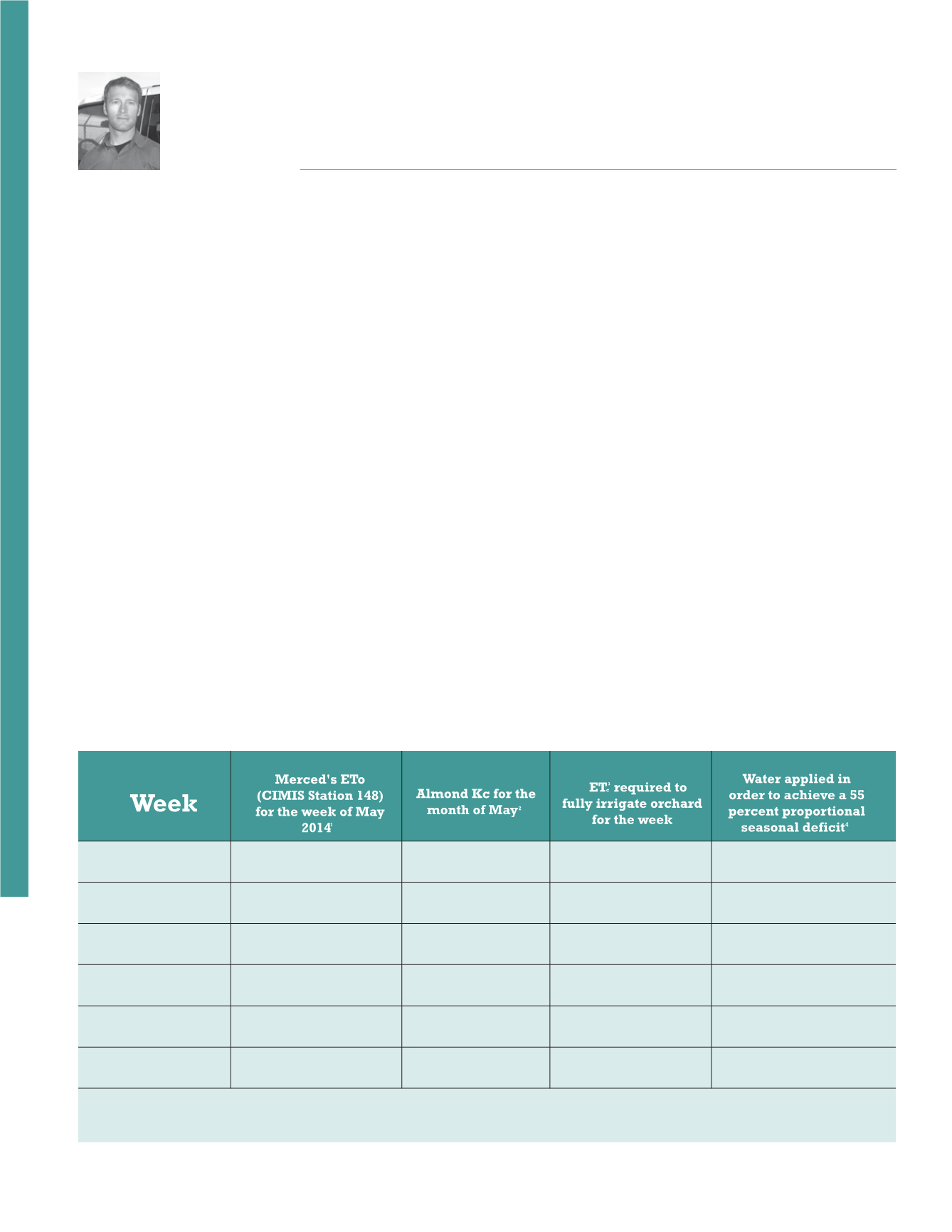
40
Almond Facts
MARCH | APRIL 2015
TIME TO CONSIDER
Time To Consider
DAVID DOLL
The spring time months of March and April present
many challenges in managing almonds. Irrigation,
nutrient applications, disease management, and weed and
insect control begin during this period and are critical for
developing a successful crop.
Drought Management Of
Almonds
Many farmers across the state will be impacted by the fourth
year of severe drought. Within almonds, there has been
a lot of research conducted to determine better strategies
to apply water. The University of California Division of
Agriculture and Natural Resources has recently published an
article titled "Drought Management for California Almonds"
(Publication #8515, downloadable for free at http://
anrcatalog.ucdavis.edu/) which goes into further detail about
the two recommended strategies, which are relatively easy to
adopt and produce consistent outcomes. These strategies, as
well as other considerations, are highlighted below.
The best strategy for your orchard depends on how much
water is available. If 15 percent of less than full ETc is
available, Hull Split Strategic Deficit Irrigation (SDI) could
be considered. If greater, the Proportional Deficit Irrigation
(PDI) strategy should be considered. An example of a 55
percent of water availability applied using PDI for the month
of May is given in Table 1.
Hull Split SDI
Hull Split SDI maintains full irrigation until the
completion of kernel fill. After kernel fill and until 90
percent hull-split, irrigation is applied only when trees
reach SWP values of -14 to -18 bars. Field research has
shown that this technique will decrease water use by as
much as 34 percent during this period, reducing total
seasonal water use by about 15 percent, while having
minimal impacts on current and next season's crop.
In practice, it can be difficult to fine-tune the irrigation
schedule to this SWP threshold. Many growers will
initially reduce water applications by 50 percent around
mid-June and will adjust the amount of subsequent
irrigations once stress levels increase and soil moisture
depletion occurs. Water should be applied prior to harvest
to improve hull-split and reduce hull tights. Hull Split SDI
is a particularly effective method for reducing hull rot, if
that is a problem, but it also improves harvest-ability by
reducing the force and time required for shaking, which
can benefit the long-term health of the orchard.
PDI
If a pressure chamber is unavailable, or the anticipated
seasonal water deficit is greater than 15 percent for the
seasonal evapotranspiration (ETc), then reduced water
May 1st-3rd
4th-10th
11th-17th
18th-24th
25th-31st
Total
0.74
1.47
1.95
1.67
2.11
7.94
0.94
0.94
0.94
0.94
0.94
N/A
0.70
1.38
1.83
1.57
1.98
7.46
0.38
0.76
1.01
0.86
1.09
4.10
1 Evapotranspiration of the reference crop (ETo )is sourced from CIMIS.Real time data for the
current week/year can be found at
/.
2 Referenced crop coefficient (Kc) (unpublished data)
3 Evapotranspiration rates for almonds were calculated by multiplying ETo by the crop
coefficient (Kc).
4 Proportional deficits are calculated by multiplying the target deficit by the fully irrigated ETc.


